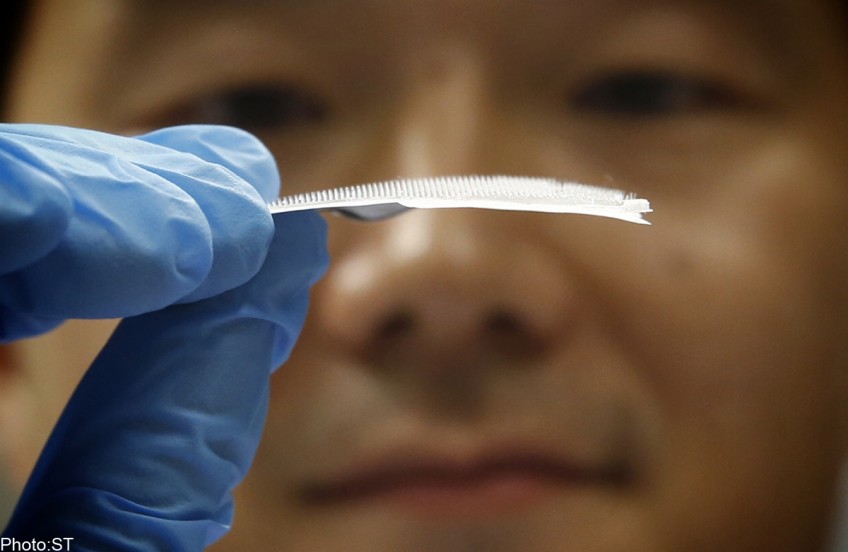NUS team pioneers pain-free 'injections'


SINGAPORE - Having to visit the doctor for medical injections often fills people with dread. But what if the procedure was completely pain-free?
Scientists from the National University of Singapore (NUS) have created a novel device that could promise painless yet quick delivery of painkillers, vaccinations, or even skin treatments.
Called a microneedle patch, it combines a simple patch, on which are placed dozens of tiny needles only 600 microns long (about six hairs' breadth) and half as wide.
These "microneedles" are able to penetrate human skin deep enough to deliver treatments effectively, without causing pain, said Dr Kang Lifeng, a researcher at the Department of Pharmacy at NUS. His team tested the device on themselves to confirm this. At the worst, said Dr Kang, patients may get minor skin reddening, not unlike after being pinched.
With the microneedles, drug treatments can be delivered within five minutes, compared with 45 minutes when a patch is used. Dosages can be altered by varying the size of the microneedle patch.
Conventional injections are still quicker, as they would deliver treatments instantly into the body.
"Our skin is a very effective layer against bacteria, viruses and chemicals. As a result, it is very, very difficult for active ingredients in cosmetics, patches, creams or gels to get through," said Dr Kang.
"But with the help of microneedles, we can penetrate the skin very, very fast."
Tests on skin samples using collagen, used popularly as treatment against wrinkles and skin ageing, also found that the new device penetrated deeper and faster than conventional patches.
The biggest cheers, though, may come from children who are terrified of injections.
Dr Kang and his team want to test if their device is suitable for giving babies vaccinations. They are also exploring its usefulness in treating hair loss.
The next step for the team is to conduct clinical trials and commercialise the device, something Dr Kang hopes to do within the next three to five years.
He envisions the microneedle patch to be particularly useful for diabetes or cancer patients in home care, who may need to administer painkillers quickly yet non-invasively.
davidee@sph.com.sg
Skin Breakthrough
Our skin is a very effective layer against bacteria, viruses and chemicals. As a result, it is very, very difficult for active ingredients in cosmetics, patches, creams or gels to get through... But with the help of microneedles, we can penetrate the skin very, very fast.
- Dr Kang Lifeng

This article was first published on September 6, 2014.
Get a copy of The Straits Times or go to straitstimes.com for more stories.